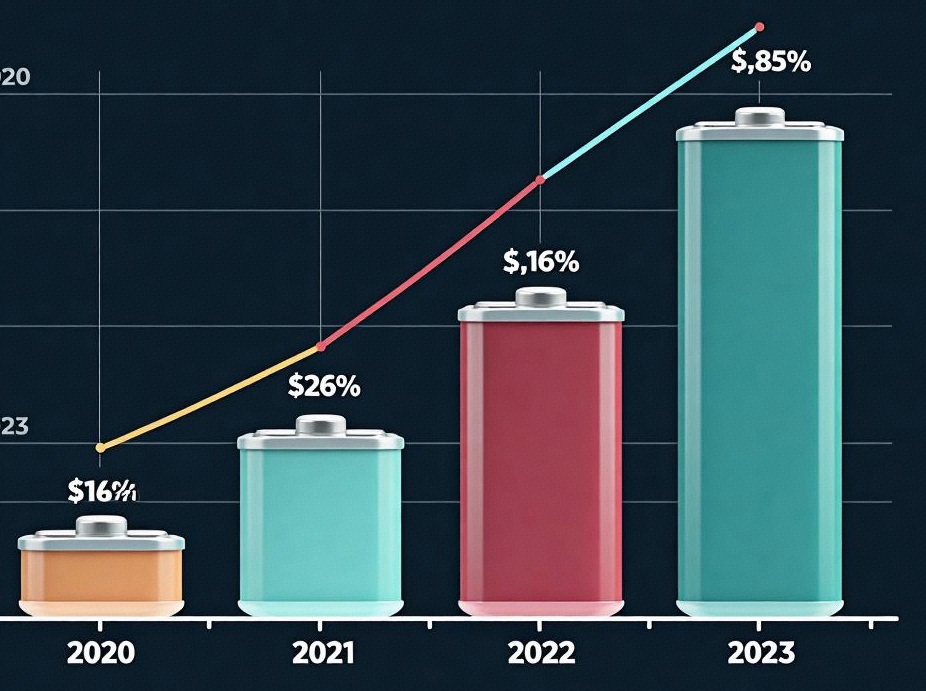The need for sustainable energy solutions has become increasingly visible. As the global demand for electricity rises and fossil fuel reserves deplete, battery storage systems provide a reliable, efficient, and eco-friendly solution. Using batteries for solar energy storage enhances sustainability by reducing carbon emissions and optimizing energy consumption. By integrating advanced energy storage solutions, societies can work towards a cleaner and more resilient energy infrastructure, reducing dependence on non-renewable energy sources. This shift is critical in achieving global sustainability goals and reducing climate change impacts.
The Role of Energy Storage Solutions in Protecting the Environment
Energy storage plays a vital role in mitigating environmental damage caused by fossil fuels. Battery storage solutions, such as LiFePO4 batteries, help reduce greenhouse gas emissions by enabling efficient use of renewable energy sources like solar power. By storing excess energy generated during the day and discharging it when needed, battery storage minimizes reliance on coal and gas power plants. This transition not only improves air quality but also conserves natural resources. Additionally, energy storage reduces energy wastage by optimizing grid operations, further contributing to a cleaner environment.
Moreover, the use of battery storage in solar energy applications contributes to climate change mitigation by lowering the carbon footprint of electricity generation. Unlike conventional power sources that rely on fossil fuels, solar energy storage enables the shift toward a decarbonized energy sector. By implementing LiFePO4 battery storage systems, homes and businesses can directly participate in reducing overall emissions, fostering a healthier planet. Additionally, battery storage supports energy grid stabilization by balancing fluctuations in supply and demand, preventing energy losses, and improving overall efficiency. Hicorenergy’s advanced battery solutions are designed to support sustainability by enhancing the efficiency of solar energy storage systems, promoting a greener future for upcoming generations.
The Economic Benefits of Using Batteries for Solar Energy Storage
The financial advantages of battery storage are undeniable. By storing solar energy for later use, homeowners and businesses can significantly reduce electricity bills by avoiding peak-hour charges. Additionally, battery storage increases energy independence, reducing reliance on unstable grid supply and protecting against rising electricity costs. Investing in LiFePO4 battery storage systems ensures long-term economic savings and sustainability. Governments and energy regulators are also introducing incentives and tax benefits for those investing in battery storage solutions, making it an increasingly cost-effective option.
The ability to store solar energy and use it when needed reduces reliance on costly utility electricity. This is particularly beneficial in regions where electricity rates fluctuate or where demand charges apply. Businesses that integrate LiFePO4 battery storage solutions into their operations can enjoy enhanced energy efficiency and lower operational costs, making them more competitive in their respective industries. Additionally, as technology advances and economies of scale drive down production costs, battery storage is expected to become even more affordable, making it an increasingly attractive investment for individuals and businesses alike.
The Advantages of LiFePO4 Batteries
LiFePO4 batteries have emerged as one of the most reliable energy storage solutions for solar applications. These batteries offer exceptional safety, longevity, and efficiency, making them the preferred choice for residential and commercial energy storage. Compared to traditional lead-acid batteries, LiFePO4 batteries boast a much longer lifespan, typically exceeding 6,000 charge cycles. Their high energy density allows them to store more energy in a compact space, making them ideal for solar storage systems.
One of the key advantages of LiFePO4 batteries is their enhanced safety features. Unlike other lithium-ion batteries, they are highly resistant to overheating and do not pose risks of thermal runaway or combustion. This ensures reliability and safety, even in high-temperature environments. Additionally, LiFePO4 batteries offer a high discharge efficiency, ensuring that stored solar energy is utilized with minimal loss, leading to improved overall energy management.
LiFePO4 batteries also support scalability, allowing users to expand their energy storage capacity as needed. Whether used for residential, commercial, or industrial applications, these batteries provide flexibility in power management. Their ability to perform well under extreme conditions makes them suitable for various geographic locations, ensuring consistent energy supply regardless of environmental factors.
Another advantage of LiFePO4 batteries is their maintenance-free nature. Unlike traditional lead-acid batteries, which require periodic maintenance and water refilling, LiFePO4 batteries provide a hassle-free experience. This feature is particularly beneficial for off-grid solar systems, where reliability and long-term performance are crucial. By integrating these batteries into solar energy storage solutions, users can enjoy uninterrupted power with minimal upkeep, reducing operational costs over time.
The Future of LiFePO4 in Solar Energy Storage Applications
As the global transition towards renewable energy accelerates, the demand for efficient battery storage solutions is growing. LiFePO4 technology continues to evolve, offering improved performance, affordability, and sustainability. Innovations in battery chemistry and manufacturing are driving down costs, making these batteries more accessible to a broader audience.
One significant trend in solar energy storage is the integration of smart battery management systems (BMS). These systems enhance the efficiency and lifespan of LiFePO4 batteries by optimizing charge cycles and preventing overcharging or deep discharging. This technological advancement further improves the reliability and economic viability of solar energy storage solutions.
Battery storage is also driving innovation in electric vehicle (EV) integration with solar energy systems. As EV adoption increases, LiFePO4 batteries are being used to support vehicle-to-grid (V2G) technology, allowing stored solar energy to be used for charging electric vehicles. This advancement enhances energy efficiency while promoting sustainability in the transportation sector. As research continues, the role of LiFePO4 batteries in solar energy storage will expand, offering smarter and more cost-effective solutions for the future.
The Future of Sustainable Energy with Battery Storage
Battery storage is revolutionizing the energy sector by enabling greater renewable energy integration. As solar and wind power become more prevalent, reliable storage solutions are essential for maintaining a consistent power supply. LiFePO4 batteries, with their superior efficiency and durability, are leading this transformation.
One of the most significant impacts of battery storage is its ability to support decentralized energy systems. By using LiFePO4 batteries, households and businesses can generate and store their own energy, reducing dependence on centralized grids. This not only enhances energy security but also mitigates transmission losses, improving overall efficiency.
Moreover, advancements in energy storage technology are enabling new applications such as microgrids and virtual power plants. These innovations allow communities to share stored energy, creating resilient energy networks that can withstand power outages and grid disruptions. As battery costs continue to decline and performance improves, LiFePO4 batteries will play an increasingly crucial role in shaping the future of sustainable energy.
Enjoy the Benefits of Using Batteries for Solar Energy Storage
Hicorenergy offers cutting-edge battery storage solutions designed to maximize the benefits of solar energy. Their LiFePO4-based systems, such as the I-BOX 48100R and Si LV1, provide high efficiency, long lifespan, and robust safety features. These products enable users to harness solar energy effectively, reducing electricity costs and promoting sustainability.
Hicorenergy’s battery storage solutions come equipped with advanced battery management systems for optimal performance. They are compatible with major inverters, ensuring seamless integration with existing solar setups. Additionally, their modular design allows for scalable storage, making them suitable for residential, commercial, and industrial applications. With a focus on durability and reliability, Hicorenergy’s products are built to withstand diverse environmental conditions, providing a stable and efficient power supply.
Conclusion
Battery storage is a game-changer in the transition to sustainable energy. LiFePO4 batteries offer unparalleled advantages in safety, efficiency, and longevity, making them the ideal choice for solar energy storage. Hicorenergy’s innovative energy storage solutions provide reliable and cost-effective options for homeowners and businesses seeking energy independence. By adopting battery storage technology, users can enjoy economic savings, environmental benefits, and a more resilient energy future. The integration of advanced LiFePO4 batteries into solar energy applications ensures that the world is moving towards a cleaner, more sustainable energy landscape, paving the way for a greener planet.

Email: service@hicorenergy.com

